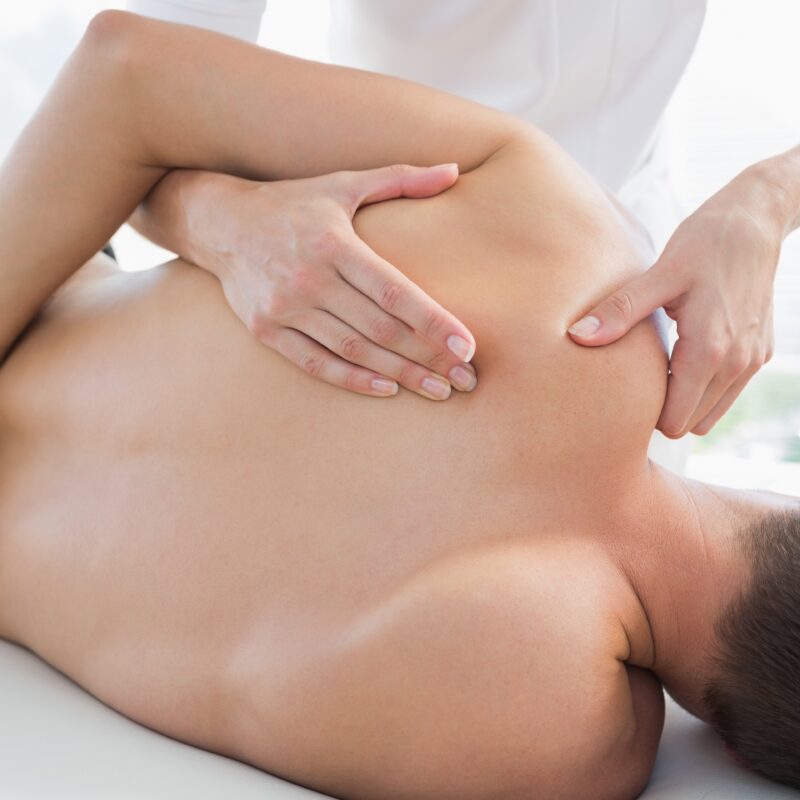
Osteopathy
Osteopathy is a form of therapy that focuses on realigning and balancing the body by working with soft tissue strains such as muscles, joints, ligaments, fascia and visceral.
Initial Visit $120
Follow-up Visit (30 minutes) $80
Follow-up Visit (45 minutes) $100
Book
Cancelled or Missed Appointments Paid in Full by Client (24-hour notice required).
Osteopathy
Manual Osteopathy offers a unique and holistic therapy that promotes wellness and overall good health.
What is Osteopathy?
In Ontario, practitioners of osteopathy are called ‘Osteopathic Manual Practitioners’.
Manual Osteopathy is a form of drug-free non-invasive manual care that treats and prevents musculoskeletal conditions by moving, stretching and massaging a person’s muscles and joints. They use various manual assessment and treatment techniques and modalities to help people of all ages and backgrounds.
Preventing illness is the primary goal of any Osteopathy practitioner. Osteopathic philosophy believes that physical problems should be treated as early as possible in order to prevent further injury or other illness. By positively affecting the body’s nervous, circulatory and lymphatic systems, manual osteopathy enables the body to heal itself.
What conditions can Manual Osteopathy treat?
Manual Osteopathy is often sought after by people suffering from acuts and chronic conditions such as:
- Neck & Back Pain
- Rotator Cuff Injury
- Thoracic Outlet Syndrome
- Hip, thigh and knee problems
- Pinched Sciatica Nerve Pain
- Muscle Stiffness
- Tennis & Glfers elbow
- Jaw Disorders
- Pain from car accident
- Sports Injuries
- Neurological Syndromes
- Sinusitis
- Carpal Tunnel
What are the benefits of Osteopathic Treatment?
There are many benefits to osteopathic treatment including:
- Reduction of pain and stiffness
- Increasing range of motion in the joints
- Prevention of injury
- Treating spinal problems resulting from poor posture or spinal disc injuries
- Relief of chronic and acute pain through non-invasive treatment
- Decrease the stress on the joints
- Reduction of muscle tension and spasm in the body
- Promotion of deeper breathing
- Promotion of mental alertness
- Reduction of scars and adhesion
- Treatment of trauma resulting from accidents
- Encouragement of the body to heal itself and less reliance on pain medication
- Improvement of circulation
- Reduction of anxiety
What are some treatment techniques that Manual Osteopaths use?
Manual Osteopaths customize their approach to each patient’s needs and condition. The following are some examples of treatment techniques that the Manual Osteopath will perform:
- Osteoarticular corrections by gentle realignment of the bones
- Cranial osteopathy by gentle movement of the bones of the skull
- Normalization of myofascial tension by performing soft tissue therapy on the muscles and surrounding tissues
- Muscle energy by muscle relaxation through muscle contraction which help stretch stiff joints
What is the difference between Chiropractor and a Manual Osteopath?
Chiropractors and Manual Osteopaths are both health professionals who treat patients with a focus on the musculoskeletal system, including; the spine, joints, muscles, tendons and ligaments.
The principle working difference is that Manual Osteopaths tend to use more rhythmical and gentler techniques while Chiropractors use more often stronger, high velocity, low amplitude manipulative techniques. Chiropractors may also employ modalities such as ultrasound and various electrotherapies for pain relief while Manual Osteopaths generally rely on hands on manual techniques to relieve pain.
Essentially, both offer valuable and useful services, and each can be included in a holistic healthcare regimen.
